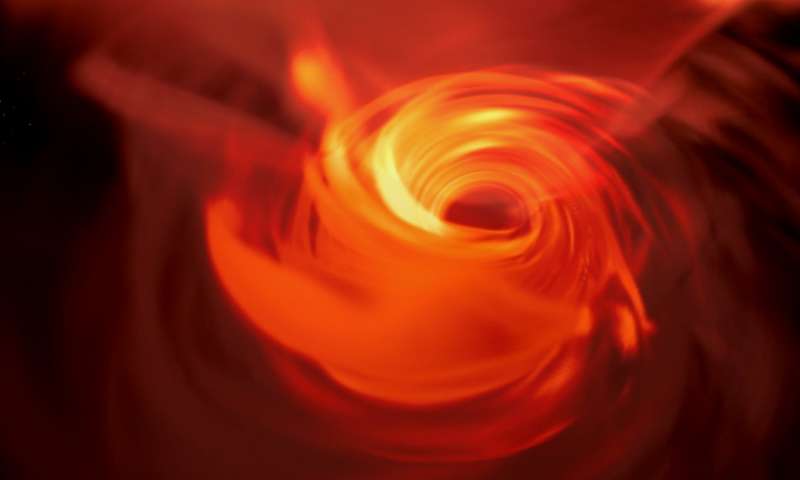
Gravity is so strong in the vicinity of a black hole that nothing can escape its clutches, not even light. This makes that black holes very difficult to study (we aren’t able to directly image them) — they’re also incredibly frightening. Luckily, you don’t have to get spaghettified in order to see what a black hole’s environment looks like. An international team of researchers has created an immersive virtual reality simulation based on recent astrophysical models of Sagittarius A* — the supermassive black hole at the center of the Milky Way — and it all looks as amazing as it sounds.
“Our virtual reality simulation creates one of the most realistic views of the direct surroundings of the black hole and will help us to learn more about how black holes behave. Traveling to a black hole in our lifetime is impossible, so immersive visualizations like this can help us understand more about these systems from where we are,” Jordy Davelaar, a postgrad at Radboud University, The Netherlands, and co-author of the new study, said in a statement.
The researchers employed the most advanced physical models to create a series of images that were stitched together, forming a 360-degree virtual reality simulation of Sagittarius A*. Using any widely available VR console, people can now dive deep into the chaos that surrounds the black hole.
Sagittarius A* is located around 26,000 light years from Earth, and scientists estimate it measures 27 million miles (44 million km) across. The black hole itself — or rather its event horizon — cannot be imaged by telescopes due to large clouds of gas and dust blocking the view.
About 1% of all matter that orbits the black hole is sucked in. The rest forms a swirling disk many light-years across that constitutes a reservoir of gas and dust that black holes feed on — and its motion is completely mesmerizing!
The realistic simulation will help researchers form a better understanding of the dynamics of black hole systems. It also serves an educational purpose by providing a compelling visual explanation of how black holes behave.
“The visualisations that we produced have a great potential for outreach. We used them to introduce children to the phenomenon of black holes, and they really learned something from it. This suggests that immersive virtual reality visualizations are a great tool to show our work to a broader audience, even when it involves very complicated systems like black holes,” Davelaar said.
The VR simulation was described in the open access journal Computational Astrophysics and Cosmology.






